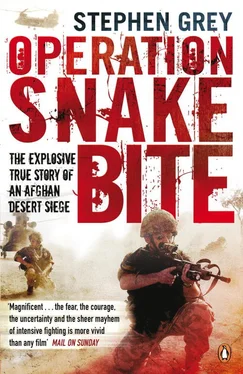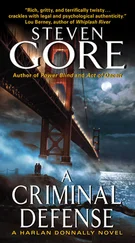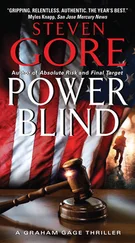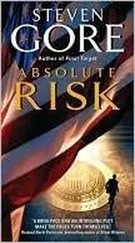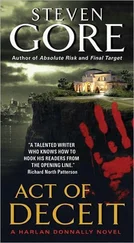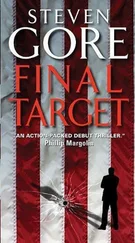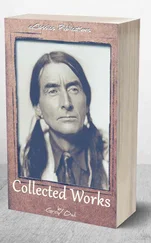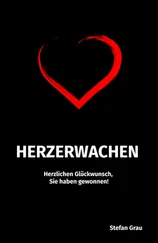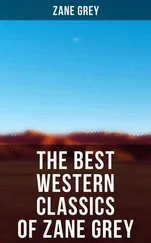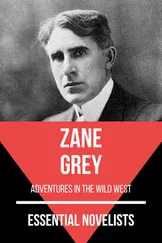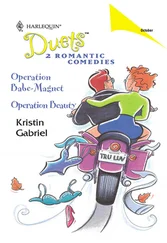To the electric guitar of AC/DC’s ‘Back in Black’ – blared from the loudspeakers of the American anti-tank platoon – the ANA’s leaguer in the desert broke camp at dawn on 7 December. At 07.30 it began to head north.
The convoy moved 12 miles north across the desert, passing close to where Jack Sadler had been killed. At 12.30, the main convoy established a new leaguer, but B Company broke off and led 2nd kandak away from the main convoy and crept towards Musa Qala. Vehicles were parked about a mile away from a village on the edge of town.
Before the soldiers set off on foot, an intelligence flash message stated simply: ‘Enemy will fight.’ Together with photographer Nick Cornish, I joined B Company on the attack.
Deh Zohr e Sofla village, 3 miles south-west of Musa Qala, with B Company, 2 Yorks, 12.30
A burst of gunfire erupted in front, and we dived into a shallow ditch for cover. It was no protection. We had little choice but to run. Bullets slammed into the ground around us as, feeling horribly exposed, we raced for the sanctuary of an armoured Humvee.
Captain Andy Breach and his company of ANA were the furthest forward when the firing began. They had a gully to their left and they dived into it. For some reason, it felt quite funny as everyone hunkered down. People were giggling. But Breach knew someone had to poke their head up and start returning fire. ‘I would have been quite happy just lying there and not doing anything,’ he said. It was just like they had taught him at Sandhurst: ‘There is a moment when everyone just turns round and looks at the officer and asks for leadership,’ he recalled. Breach looked back at Jake kneeling in a ditch across the road and saw the OC giving him the thumbs up. Jake was opening fire – encouraging the others to get their heads back up. So Breach followed suit and everyone began. It was hard to get the ANA to fire. And it wasn’t helped by the fact that the interpreter, Raj, had run away to the rear.
On Jake’s side of the road, Jonno and his lieutenant, Craig Dawson, were dealing with an ANA company that was even more in pieces. Amid all the incoming fire, they’d become distracted by another drama that was unfolding. As the gunfire opened up, three vehicles were coming up the road. It was the main route leading south-west out of Musa Qala, and, from what we had already seen further back, there was a steady flow of refugees trying to get out. One of the vehicles, a white saloon car, stopped in its tracks. But the other two – a white Toyota Corolla and a wooden-sided green-and-grey truck – started to accelerate. Their drivers were in a panic trying to escape. To their misfortune, those on board were heading straight for two American Humvees and for British soldiers coming down the road. Many feared these cars were suicide bombers: they had been warned the Taliban might be planning such attacks.
Walking at the rear, Jake’s second-in-command, Nick Mantell, and Corporal Gregory ‘Cagey’ Roberts, who was carrying a radio set, watched the tragedy in slow motion. They watched as the Toyota sped towards them. Cagey thought it was a suicide bomber, and he wanted to open fire, but Mantell was in the way. Mantell thought it was just people trying to flee the fight. But neither was sure.
It was the gun trucks of American special forces that opened fire first. Their .50 calibre bullets ripped through the two moving vehicles: instantly killing the drivers of both car and truck. Jake felt the same threat as the cars surged past him, and he too fired some warning shots. But when he saw the Americans engaging directly, he shouted out: ‘Don’t shoot! Don’t shoot! There are women and children in the back!’
But British soldiers had opened fire too.
Lee Bellingham was one of them. Six months later, when we met again and talked things over, he still saw the scene vividly in his mind and still thought of it as he lay awake at night, picturing those children. He, like the Americans, thought it was a suicide attack.
‘So the SF [special forces] and us opened fire. They got fifty metres past us, and we just saw the car slip out down and the truck explode in half. When the car landed, it landed on its roof. You could see the hands coming out the windscreen then… I’ll never forget it… there were two kids in the boot because the boot opened up. They fall out and… as you’re looking you hear a bang next to you, and as you’re looking RPGs are flying past you… and then you just forget about it because you just get told that you’ve got to move your men this way, got to move your men that way.’
The first thing I had seen was the Toyota Corolla lying upside down on the road. Its windscreen was covered in blood. Closer still was the truck with two bodies, one dead and one dying, lying by the side. Children were crying and a crowd was gathering. They were looking at the British, shouting, ‘Go away! Go away.’ They were joined by the ANA kandak commander, Rahimi, and Corporal Phil French, the company medic, who tried to save the dying man.
There was a scene I did not know about until months later, one that took the death toll far above the two I initially reported. Further up the hill, where the wounded civilians were being brought, Mantell and Cagey found a pick-up truck with two injured women and about eight children, and a man in the passenger seat who was clearly dying. Matt Hughes, a signaller who was also a team medic, was trying to deal with him. There was also a saloon car with two dead children in the boot, shot through the head, and an injured man in the back, shot in the stomach. And there were two further dead adults.
One of the women was bleeding through her burqa . The soldiers wanted to help her, but she would let no one near.
They radioed to get French brought up and Mantell sent a nine-liner (a casualty report) up to brigade for a helicopter to collect the wounded.
One of the men – whose wife and two kids were injured – said he wanted to drive the group to Gereshk to reach the hospital. But that was a five-hour drive, and Mantell, speaking through an ANA interpreter, urged him to stay. ‘There’s a helicopter coming,’ he said.
Sergeant David McCarrick, who had been looking after B Company’s parked vehicles, came across to see what he could do to help. He and Matt Hughes saw the open boot, the dead children and the man laid out on the back seat. The families were refusing to let the soldiers touch the kids. They were persuaded eventually, and Cagey, Mantell and McCarrick started picking off children from the back of the pick-up and undressing the ones that were screaming. ‘Sure enough,’ remembered Mantell, ‘we started finding gunshot wounds on, I think, two of the children. But thankfully the boy’s was a graze to the arm, and the little girl’s was just a gash.’ They would survive.
French and Hughes talked over what to do about the man in the back seat. He had been shot through his liver. They could give him a drip to replace some fluids, but that would only postpone his death. With a battle still raging, they decided they had to conserve their supplies.
Mantell needed to get back with the company in the village, and Jake also needed the company medic, French, to be back with the troops, just in case there were more casualties. Cagey and Mantell took a WMIK and drove French back to the village.
Back at the top, Dave McCarrick was still fighting for the chopper and looking after the wounded, along with Hughes, the team medic.
‘We will have a helicopter in five minutes,’ they told him.
And then an hour later, he was still saying: ‘Where’s the fucking helicopter?’
‘Oh yeah, it’s on its way,’ he was told. After about four hours, he heard it definitely wasn’t coming. By that time, the man on the back seat had died anyway. It was getting dark and getting cold.
Читать дальше
